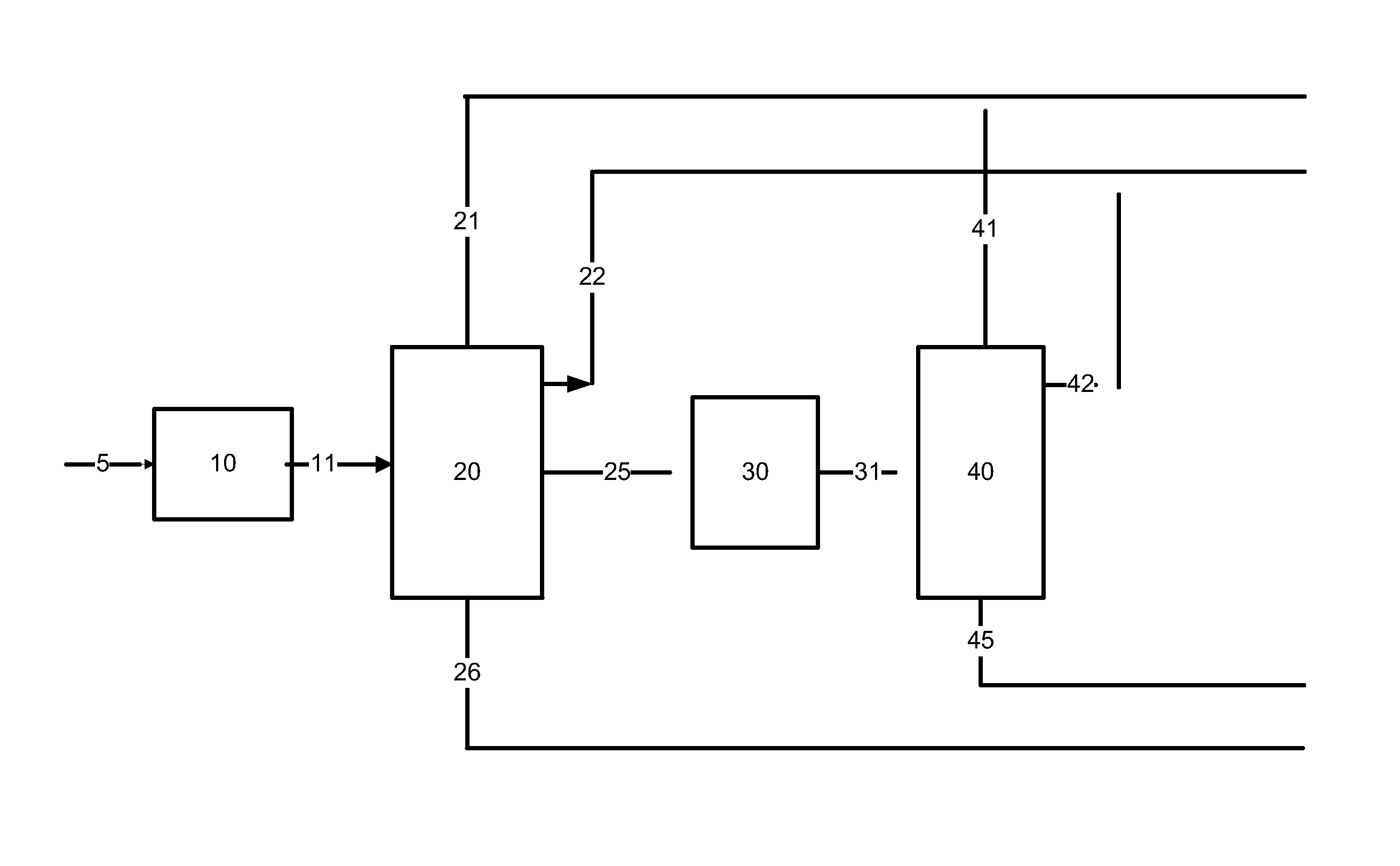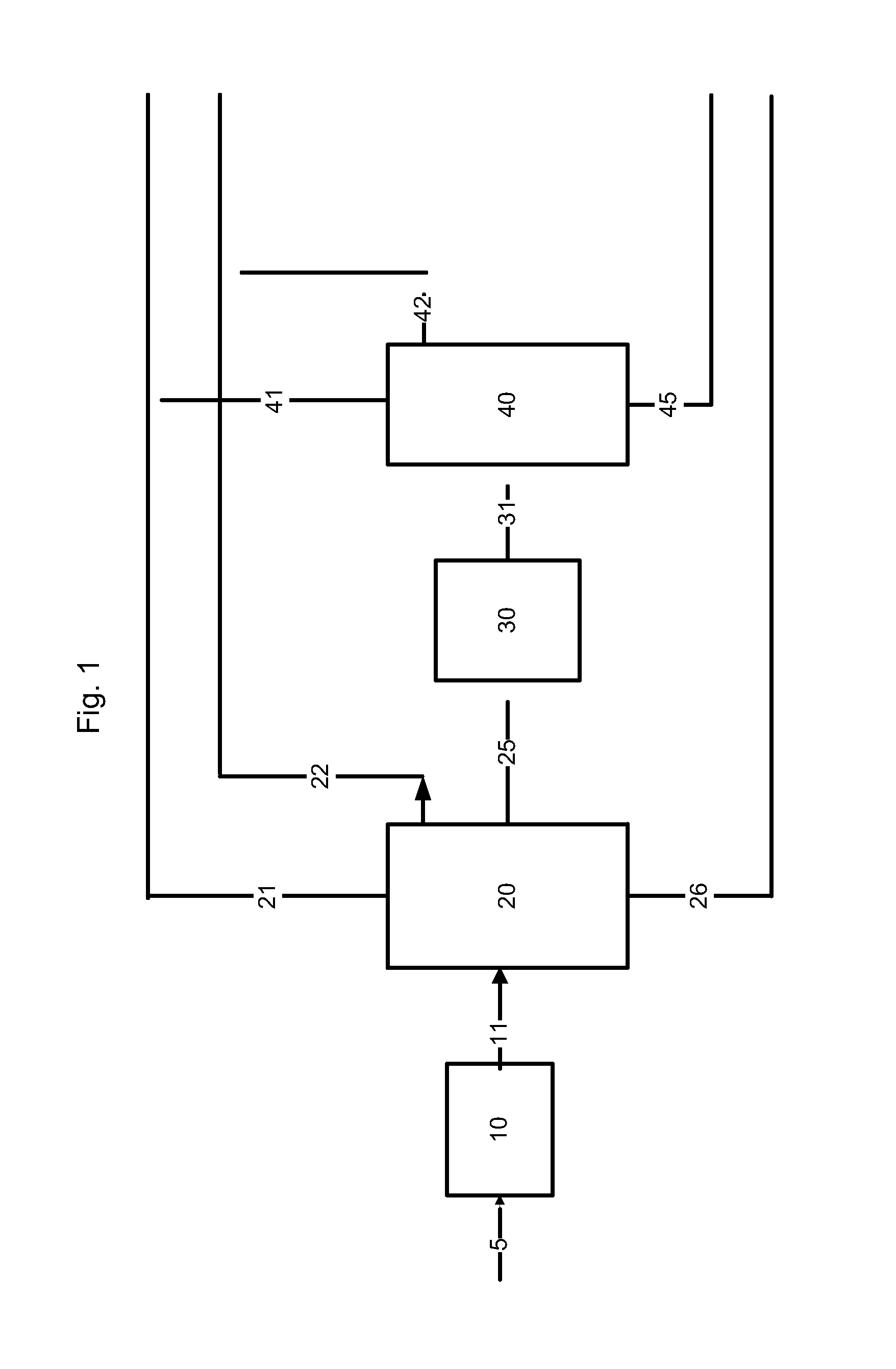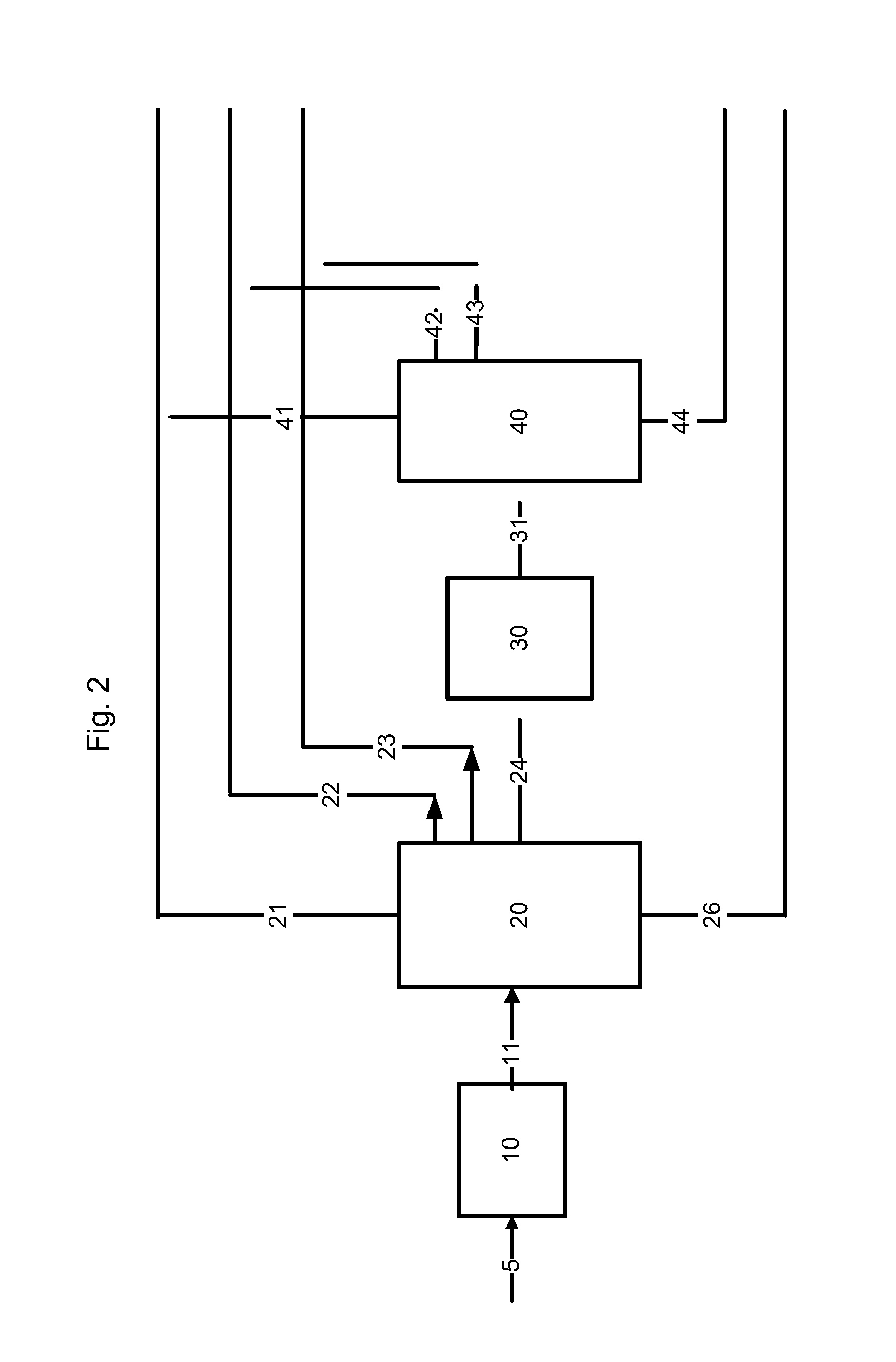Multi-stage reforming process to produce high octane gasoline
a technology of high octane gasoline and reforming process, which is applied in the direction of hydrocarbon oil treatment products, physical/chemical process catalysts, metal/metal-oxide/metal-hydroxide catalysts, etc., can solve the problems of general undesirable hydrocracking anddealkylation, and achieve the effect of improving the overall reforming process performan
- Summary
- Abstract
- Description
- Claims
- Application Information
AI Technical Summary
Benefits of technology
Problems solved by technology
Method used
Image
Examples
example 1
[0085]A naphtha feed, with an API of 54.8, RON of 53.3 and an ASTM D-2887 simulated distillation shown in Table 1 was reformed in a penultimate stage using a commercial reforming catalyst comprising platinum with a rhenium promoter on an alumina support. The catalyst contained about 0.3 wt. % platinum, and about 0.6 wt. % rhenium on an extruded alumina support. Reaction conditions included a temperature of 840° F., a pressure of 200 psig, a 5:1 molar ratio of hydrogen to hydrocarbon and a feed rate of 1.43 hr−1 LHSV. The C5+ liquid yield was 92.7 wt %. The hydrogen production was 975 standard cubic feet per barrel feed.
[0086]This C5+ liquid product (penultimate effluent) collected from the penultimate stage had an API of 46.6, an RON of 89 and an ASTM D-2887 simulated distillation as given in Table 2.
[0087]
TABLE 1Simulated Distillation of naphtha feedVol %Temperature, ° F.IBP1821019930227502587029190336EP386
[0088]
TABLE 2Simulated Distillation of the C5+ liquid productfrom the penult...
example 2
[0089]The C5+ liquid product from Example 1 was distilled into an intermediate reformate and a heavy reformate. The intermediate reformate was found to represent 80 vol % of the C5+ liquid product from Example 1. The intermediate reformate, had an API of 55.7, an RON of 85 and an ASTM D-2887 simulated distillation as shown in Table 3, and was used as feed in a final reforming stage in Examples 3-6. The heavy reformate was found to represent 20 vol. % of the C5+ liquid product from Example 1. The heavy reformate had an API of 28.9 and an RON of 105, and is further described in Table 4.
[0090]
TABLE 3Simulated Distillation of intermediate reformateVol %Temperature, ° F.IBP1681019030235502407028490296EP336
example 3
[0091]The intermediate reformate produced in Example 2 was used as feed to the final reforming stage which used a ZSM-5 zeolite based catalyst composited with 35% alumina binder material. The ZSM-5 had a SiO2 / Al2O3 molar ratio of ˜2000 and was ion exchanged to the ammonium form before incorporating in a 65% zeolite / 35% alumina extrudate. The extrudate was impregnated with 0.8% Pt, 0.3% Na, and 0.3% Mg by an incipient wetness procedure to make the final catalyst. The reaction conditions and experimental results are listed in Tables 4 and 5.
PUM
| Property | Measurement | Unit |
|---|---|---|
| vol % | aaaaa | aaaaa |
| pressure | aaaaa | aaaaa |
| pressure | aaaaa | aaaaa |
Abstract
Description
Claims
Application Information
 Login to View More
Login to View More - R&D
- Intellectual Property
- Life Sciences
- Materials
- Tech Scout
- Unparalleled Data Quality
- Higher Quality Content
- 60% Fewer Hallucinations
Browse by: Latest US Patents, China's latest patents, Technical Efficacy Thesaurus, Application Domain, Technology Topic, Popular Technical Reports.
© 2025 PatSnap. All rights reserved.Legal|Privacy policy|Modern Slavery Act Transparency Statement|Sitemap|About US| Contact US: help@patsnap.com



